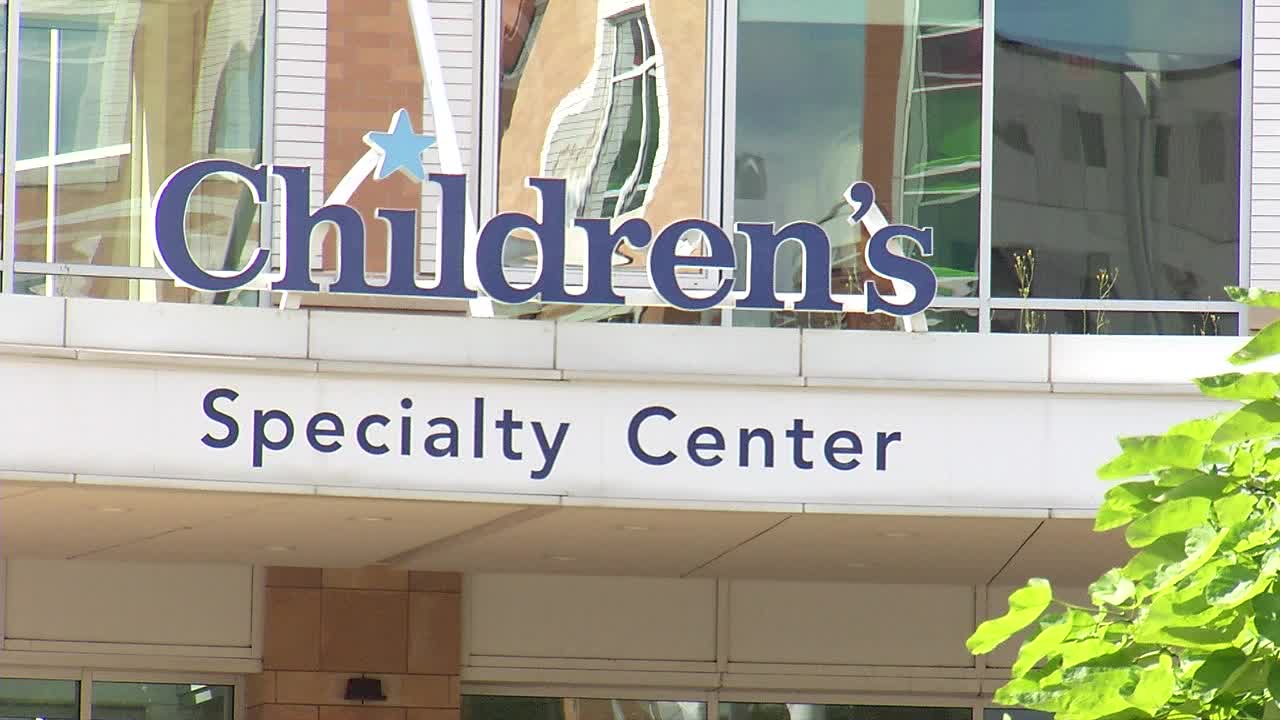Children’s Minnesota program helps kids battling illness return to school
[anvplayer video=”5132196″ station=”998122″]
It’s been just over a year since 10-year-old Chloe McDonough found out she was sick. In June of 2021, she was diagnosed with a form of leukemia that kept her out of school for most of the 2021-2022 school year.
“It was really hard on Chloe, really, really hard for her to miss out on the excitement of back to school photos, picking out your first day of school outfit,” said her mother Erin McDonough.
Chloe kept up with school-work at home with the help of a tutor. When it was time to go back into the classroom in April, she had mixed emotions.
“I was really excited but I was a little nervous,” said Chloe McDonough.
Children’s Minnesota child-life specialists worked with Chloe on a virtual presentation to her class. They shared photos of her treatment and explained her illness to her classmates. Students could also ask questions about leukemia.

(KSTP-TV)
“They helped my classmates understand my condition better,” she said. “I feel like more of them were masking and being more careful around me after that.”
The classroom presentation lasted about 45 minutes.
“I think it was going to be emotionally taxing for her to keep telling the story or deciding who gets to know and who wouldn’t know,” said Erin McDonough. “Telling everyone all at the same time was really helpful because it alleviated kind of that emotional toll.”
Every year, Children’s Minnesota helps dozens of students of all ages with these transitions.
“The most important thing is taking the lead of that student to really build and grow their confidence and self-esteem when they’re returning to the classroom,” said Joy Johnson-Lind, the senior director of child and family services. “It pulls in empathy from other classmates and peers to really get a understanding of what that peer or classmate has been going through.”
Specialists visit classrooms but during the pandemic they also started incorporating virtual presentations.
“Our goal is to set the stage and then really empower that student and the teacher to move forward ensuring there is really a supportive environment,” said Johnson-Lind. “Things will come up, it’s not always smooth. Sometimes kids are back in the hospital, they’re continuing to have treatment so we want to make sure we’ve kept that line of communication open.”
She added, “I think as much as we can create a foundation for respectful ways to talk about illness and disease, it’s just going to be a win-win for everyone involved.”
Children’s Minnesota launched the program decades ago, after being approached by a Minnetonka woman who wanted to make an $8,000 donation.
“I had a client who had a son with cancer,” said Regina Finkelstein, a real estate agent. “She was telling me all about how hard it is for them as a family and for that son.”
Finkelstein also owns Great Clips franchises. She brought about 25 salons together to raise money for the hospital. When she dropped off the $8,000 check, she told the hospital, “I want this money to go to the kids.”
A doctor suggested they use the money to help children re-enter school after treatment, she recalled.
“I thought it was a great idea,” said Finkelstein.
This week, just like she has every year, she’s holding a Cut-A-Thon to help fund the program. There are now 140 salons participating.
Over the 29 years of the program, they’ve raised about $1.7 million.
“It is very important and it is very emotional to me, it’s very dear to my heart,” she said.
Erin McDonough is grateful for the program.
“I think being able to go back and have that excitement and pick up where she left off was something really valuable,” said McDonough.
Chloe shared a message for other students whose classmates may be battling an illness, “I just want them to be kind to them and help them out.”
For more information about how you can support the program, click here.
“The impact does not stay in the classroom so we know these students go home and they’re sharing information and feelings with their families so really it continues to spread,” said Johnson-Lind.